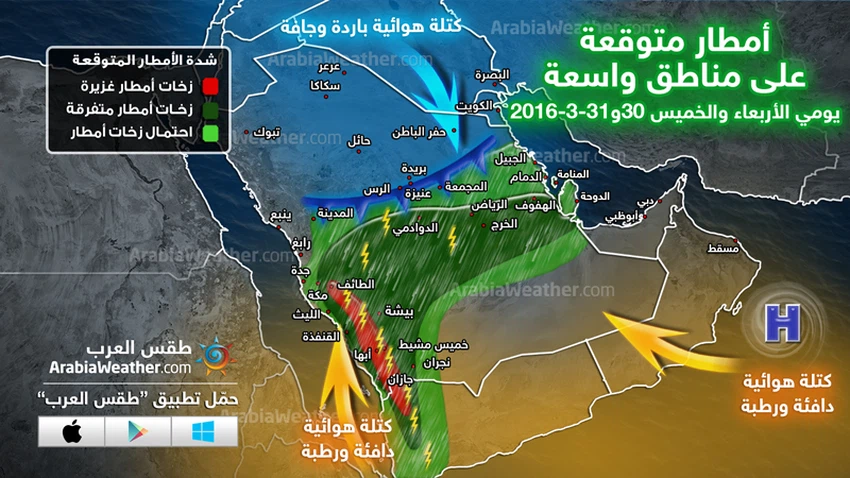توقع أمطار متفرقة على الرياض والشرقية يوم الخميس
موقع ArabiaWeather.com- م. ناصر حداد- يتوقع بمشيئة الله تساقط زخات متفرقة من المطر على العاصمة الرياض والمنطقة الشرقية يوم الخميس، تكون متوسطة الشدة عموماً وربما تصحب بالبرق في ساعات المساء.
وتكون الرياح، بإذن الله، شمالية شرقية معتدلة السرعة تنشط أثناء ساعات المساء، مما تعمل على إثارة الأتربة والغبار في بعض المناطق.

ويتوقع أن تكون الحرارة في العاصمة الرياض في أوائل العشرينيات وهي دون معدلاتها العامة نسبة لهذه الوقت من العام بشكل واضح وملموس، إذ يبلغ معدل الحرارة لأوآخر شهر آذار بحدود 31 درجة مئوية، في حين تميل الأجواء إلى البرودة في ساعات الليل حيث تنخفض الحرارة إلى 13 درجة مئوية، وبالتالي يستوجب ارتداء ملابس تتناسب وهذه الأجواء.
وتبقى الفرصة مهيئة لتساقط زخات خفيفة من المطر خلال ساعات الفجر وصباح الجمعة، ولاحقا تميل الأجواء إلى الاستقرار ويكون الطقس غائماً جزئياً، كما تكون الرياح شمالية شرقية معتدلة السرعة، وترتفع درجات الحرارة بشكل طفيف يوم السبت مع بقائها مستقرة بوجه عام.
Arabia Weather App
Download the app to receive weather notifications and more..



